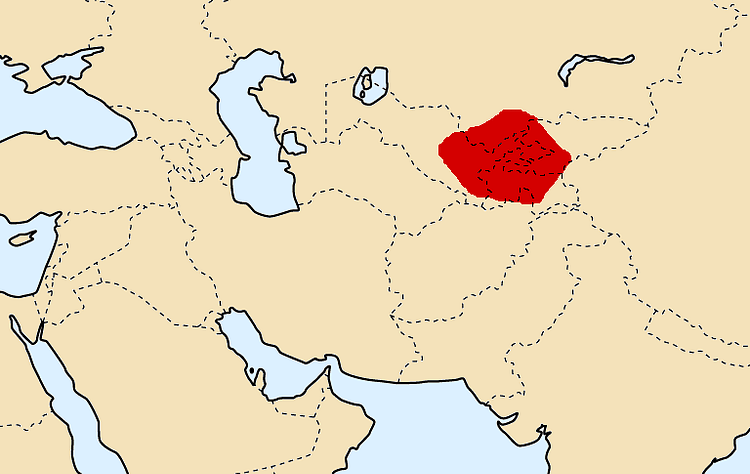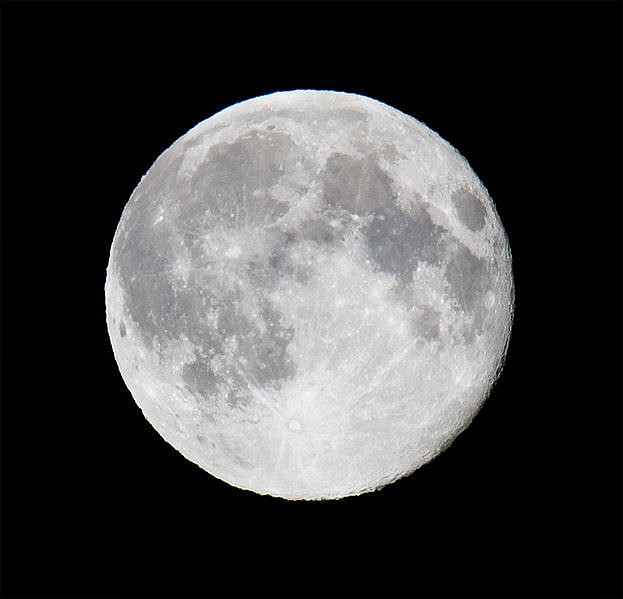Sogdiana › Soma » Ancient origins
Articles and Definitions › Contents
- Sogdiana › Antique Origins
- Soma › Ancient History
Ancient civilizations › Historical and archaeological sites
Sogdiana › Antique Origins
Definition and Origins

Sogdiana (or Sogdia) is a region in Central Asia between the mighty rivers Iaxartes in the north and Oxus in the south. Its eastern and western limits are more difficult to determine, especially since the toponym Sogdiana covered different areas at different times.
At times it kept the Oxus as its southern border until the Pamir Mountains; in other times, the Sogdian Mountains and the beginning of the northern Ferghana Valley were the eastern frontline of the area. In the West, the Aydar Lake and the southeastern border of the Kyzyl Kum desert were Sogdiana's border. Except for the two major rivers that limit Sogdiana to the north and south, the area is also divided at his center by the "very revered Polytimetos" river, (Curtius VII.10.1-3 : Polytimetum vocant incolae ), today Zerafshan, and by others whose ancient names are lost to us.
Sogdiana constituted the northern frontier of the sedentary world and thus was in constant contact with steppe nomads.Sogdian society was an agricultural one, based on the irrigation of very fertile loess soil. The area is known to have produced semi-precious stones, like lapis lazuli and carnelian or garnet.
Pre- Achaemenid Sogdiana has known urban settlement phases before the arrival of Iranian speakers of the Iron Age known as "Sogdians". The area passed under Achaemenid control under Cyrus, between 546 and 539 BC (Herodotos I.153,177), but even if they probably first controlled it entirely, the northern point being the town known by the Greeks as Kuropolis, it seems that over time the Persian rule recentred south around Marakanda. The area was not turned into a satrapy, but was administered by the the Bactrian satrap. Sometimes Sogdiana, due to its Bactrian ownership, was given by the Great Kings to their sons that weren't destined to be heir or to their relatives. Examples are Masistos son of Darius I (Herodotos IX.113.1-11), maybe Hystaspes son of Xerxes I (Diodoros XI.69.3 ; Ktesias FGrHist 688F13), and then Bessos, relative of Darius III (Arrian III.21.5).
THE STRONG LINK OF SOGDIANA AND BACTRIA EMERGED ONCE AGAIN WHEN THE GREEKS OF BACTRIA BECAME INDEPENDENT.
This last ruler made the subsequent Macedonian conquest difficult: Having killed Darios III, Bessos named himself king and ruled over Bactria. After he fled to Sogdiana in 329 BC upon hearing Alexander 's invasion on the Paropamisadai, he was betrayed and given to Alexander by the Sogdian Spitamenes. Spitamenes later waited for Alexander to pass through Sogdiana to Ferghana to rebel again, but had not better luck than Bessos. Both rebellions were motivated by the Bactrian and Sogdian nobles who were determined to maintain at all costs the privileged socio-political status that they had enjoyed under the Achaemenid regime. They were well-provided with military, money, manpower, and alliances with nomads in the north. Apama, the daughter of Spitamenes, became the wife of Seleucos in the spring of 324 BC. In 293 BC, Antiochos was appointed vice-king of the Upper-Satrapies by his father. He led an expedition against northern nomads around this date, but about 280 BC, those nomads made strong incursions into the Seleucid Empire, passing through Sogdiana. Antiochos expelled them, then tried to reinforce the northern border, bringin among other things a new wave of Greek colonists.
Nevertheless, the Greek dominion on the area was probably not strong, only concentrated in towns. The strong link of Sogdiana and Bactria emerged once again when the Greeks of Bactria became independent under Diodotos. Sogdiana was incorporated into the Greco-Bactrian Kingdom until Euthydemos' late reign, in the 210's BC, when the Sogdians once more became independent. Eucratides of Bactria succeeded to take it back up to the area around Marakanda in the 170's BC, but soon after first the Sakas and then the Yuezhei overthrew Greek dominion. Even if the Yuezhei probably made their royal court in the Polytimetos Valley, the center of political events moved south once again, and Sogdiana kept its role of frontline area in the Kushan empire until the Middle Ages.
Soma › Ancient History
Definition and Origins

Soma was a fermented juice drink which was believed to have been consumed by the Hindu gods and their ancient priests, the brahmanas, during rituals. Thought to be an elixir its consumption not only healed illness but also brought great riches.Soma is personified by the god of the same name who is also the god of sacrifices and who may, in some texts, be associated with the Moon. The drink is famously described and praised in a Mandala of the sacred Hindu text, the Rigveda.
THE DRINK SOMA
Perhaps first used in ancient Persia, Soma juice may have derived from the fermented milky sap of Asclepias acida, a climbing plant which thrives in mountain areas. Other candidates for the origin of the drink, or partial ingredients therein, include hallucinogenic mushrooms, honey, cannabis, blue lotus, milk, and pomegranate.
In mythology, the gods gained their immortality by drinking Soma and it was the favourite tipple of the great god Indra. They then gave the drink to the archer-god Gandharva for safe-keeping but one day Agni, the fire-god, stole it and gave it to the human race. Not only drunk by priests for its sacred nature it was also credited with uplifting qualities, giving the drinker a boost in energy and alertness. These effects meant that the drink has been considered divine since ancient times; a beverage which brought humans closer to the divine. It was also commonly offered in libations to the gods by worshippers.
SOMA IS REGARDED AS THE DEITY WHO SUPERVISES HINDU RELIGIOUS SACRIFICES.
THE GOD SOMA
The drink was personified as the god Soma who was considered primeval amongst the gods and a bringer of health and wealth; in many ways he is similar to the Greek and Roman gods of wine Dionysos and Bacchus while the drink is the equivalent of ambrosia in those traditions. In addition, Soma is regarded as the deity who supervises Hindu religious sacrifices and he represents the direction North-east. In the Puranas religious texts, Soma is described as riding a chariot with three wheels, which is drawn by a team of ten pure-white horses.
Later, Soma was also identified with the moon-god Osadhipati (or alternatively Chandra), a natural extension of the latter's role as the lord of herbs. In the Puranas Soma as the moon-god appears in several separate puranas, often with conflicting descriptions. He may be, variously, the son of Atri (the sage and one of the ten lords of creation), Prabhakara (of the Atri race), Parjanya (the Vedic rain-god), or Dharma (another ancient sage). In yet another version Soma was born from the churning of the milky ocean when the world was first created. He is also, confusingly, described as a warrior of the kshatriya caste and as a priest of the brahman caste. In the Vedas Sita, the daughter of Savita, the Sun, was Soma's lover but his most famous companions are Rohini and Tara.
SOMA & ROHINI
One of the most picturesque myths involving Soma is, in his guise as the moon, when he ambitiously married all 27 daughters of Daksa, the great sage. The number of these beauties is not coincidental as they are the personification of the 27 lunar asterisms. Soma, perhaps inevitably, developed a favourite, Rohini (the Red One - the constellation of Taurus), the fourth sister, and this caused great jealousy amongst the other 26. As a body, they complained to their father but he could do nothing about Soma's preference. As a result, Daksa cursed Soma so that he would never have children and, even worse, ensured that he would slowly die of consumption. Hearing this, Daksa's daughters thought that their father had gone rather too far and pleaded with him not to be so harsh. Consequently, Daksa modified his curse so that instead of expiring completely Soma would die temporarily and then rejuvenate in a continuous cycle. And this was the explanation for the periodical waning of the moon.
SOMA & TARA
In another famous episode from Hindu mythology, the amorous Soma this time abducted Tara, the wife of Brhaspati, the god-priest who acted as messenger and link between humanity and the gods. In taking Tara, Soma sparked off a war between the gods and demons ( asura ), which only the intervention of mighty Brahma brought to an end. Tara was then returned to her family but not before she had fallen pregnant with Soma's son Budha (not to be confused with Buddha ), the personification of the planet Mercury and father of the Lunar race.
LICENSE:
Article based on information obtained from these sources:with permission from the Website Ancient History Encyclopedia
Content is available under License Creative Commons: Attribution-NonCommercial-ShareAlike 3.0 Unported. CC-BY-NC-SA License